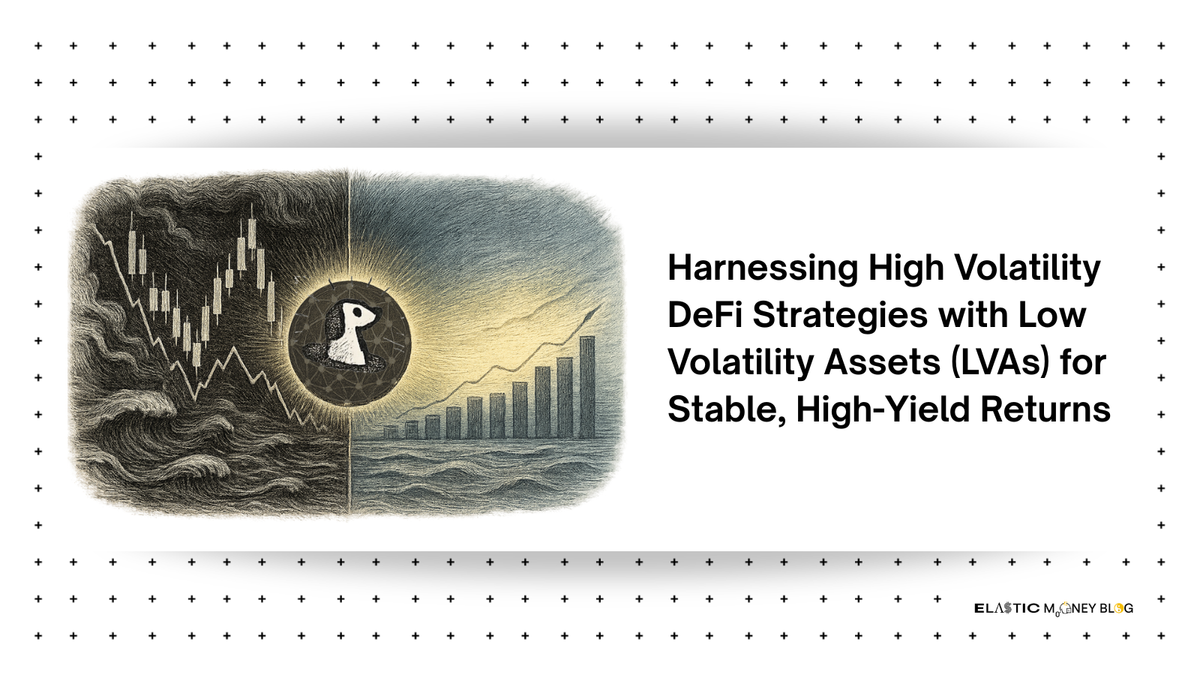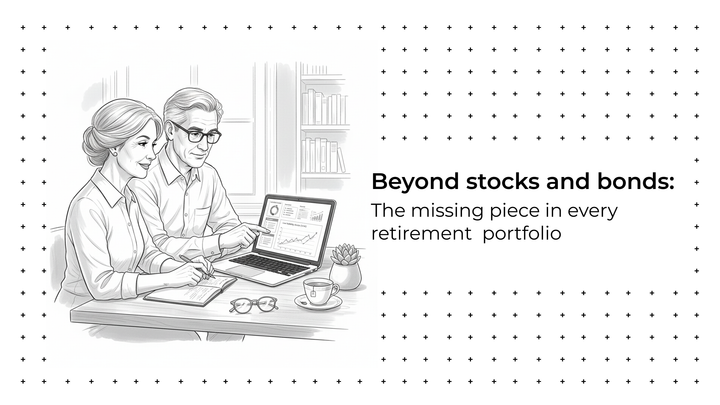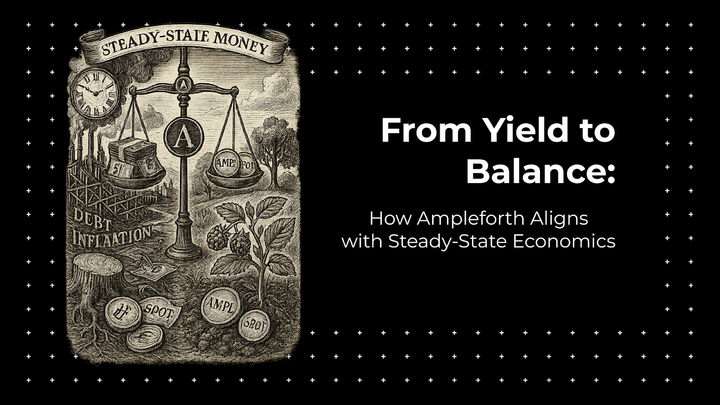Harnessing High Volatility DeFi Strategies with Low Volatility Assets (LVAs) for Stable, High-Yield Returns

Decentralized Finance (DeFi) has changed financial systems seeing open, direct access to markets, free from direct intermediaries. However, the volatility inherent in DeFi in which assets such as Bitcoin or Ethereum can move 20% + in a day often keeps risk-averse investors, including retail savers and institutional treasuries, on the sidelines when they seek investment that is stable, yet profitable.
Addressing this void are Low Volatility Assets (LVAs) that are a new category of decentralized assets with only 5-10% annualized volatility and inflation-proof, decentralized, stores of value. LVAs facilitate capital preservation and enhance opportunities from a reliable foundation unlike fiat-pegged stablecoins (such as USDC, DAI, etc.) that might ultimately lose purchasing power, or a highly volatile crypto asset that demands an exceptionally high tolerance for risk.
This article examines the implementation of high volatility strategies with LVAs in DeFi. It demonstrates LVAs and their capacity to provide entry into a $24 trillion market opportunity that can significantly improve the portfolios of retail investors, DAOs, and institutions.
Why High Volatility strategies with LVAs?
LVAs have a special niche in DeFi because they strike a balance between cryptocurrencies' extreme 50–100%+ annualized volatility and fiat-backed stablecoins, like USDC, almost no volatility, but are subject to inflation. Their very low volatility may serve as a baseline for speculative high-risk, high-reward approaches to DeFi activities such as yield farming, making liquidity provision, or arbitrage while protecting investors against the acute volatility of traditional crypto assets. In traditional finance, a typical low-volatility investment defensive stocks and bonds often outperform higher risk-equity proxies in terms of risk-adjustment. A CFA Institute report in 2024 highlighted that stability and profitability are not mutually exclusive, and low volatility equity portfolios achieved annualized returns of 8–10%, with only half the drawdowns of more volatile assets.
In DeFi, LVAs allow investors to achieve improved APY by taking advantage of market inefficiencies like high-yield liquidity pools or leveraged lending while reducing downside risk. This reflects conventional methods such as covered call writing, in which investors utilize stable assets to produce premium income amid fluctuating markets.
For instance, a DeFi investor utilizing LVAs can generate trading fees, protocol incentives, and structural yield, surpassing that of stablecoins or the volatile cycles of crypto (with 30-50% drawdowns). LVAs have a decentralized alternative consistent with DeFi direct, while minimizing risks usually associated with centralized stablecoins (censorship, regulation, and the potential for loss due to inflation).
Investors can maneuver through DeFi's uncertain environment with relative safety by using the LVAs to anchor their portfolios, capitalize on volatility to generate wealth while protecting capital capital similar to an experienced trader managing a diversified portfolio to withstand market challenges
Optimizing returns with liquidity pools
DeFi's decentralized exchanges (DEXs), like Uniswap and Curve, are built on liquidity pools, which allow users to earn passive income through trading fees (0.3–0.5%) and incentives in the form of protocol-specific tokens. However, because price swings reduce returns, volatile asset pairs like ETH/USDC expose liquidity providers (LPs) to temporary losses.
LVAs, exhibiting a low volatility, are perfectly matched for stable pools, reducing impermanent loss and ensuring dependable yields. For example, Curve's stablecoin pools, created for trades with low slippage, have traditionally provided an APY of 1-5% with slight price divergence, according to a 2024 report by LeewayHertz. LVAs enhance this model by offering decentralized stability without fiat pegs, making them a superior choice for LPs seeking reliable income.
By providing liquidity with LVAs in stable pools, investors can achieve returns that exceed traditional savings accounts or even fixed-income funds. When token rewards are taken into account, advanced liquidity providers (LPs) can combine LVAs with slightly volatile assets to increase rewards even more while keeping a low risk profile. With this strategy, LVAs become the DeFi equivalent of a dividend-paying stock, providing income and stability in a volatile market.
Enhancing Profits through Yield Farming
Yield farming, DeFi’s high-octane equivalent of traditional dividend investing, involves lending, borrowing, and staking assets across protocols to maximize returns. For LVAs, yield farming becomes a powerful high volatility strategy when paired with controlled leverage, amplifying profits while leveraging the asset’s inherent stability.
Although, high volatility strategies are not without risk. Market crashes can wipe out leveraged positions, and according to Chainalysis, smart contract exploits cost $3.7 billion in 2022. The decentralized and transparent design of LVAs reduces some risks, such as censorship or regulatory vulnerabilities that affect fiat-backed stablecoins, but disciplined risk management is still essential.
In the context of a chess game, high volatility strategies are your aggressive moves, such as giving up a pawn for positional advantage, while LVAs are your king, offering a stable core. Regular monitoring and small position sizes (1-2% of portfolio per strategy) ensure you can weather DeFi’s ups and downs.
By grounding your approach in LVAs, you create a resilient portfolio that captures DeFi’s upside while avoiding the catastrophic losses that affects over-leveraged crypto traders, much like a conservative investor using bonds to balance a stock-heavy portfolio.
Conclusion
Low Volatility Assets (LVAs) have a great chance of protecting investors who want to benefit fully from DeFi while reducing the high risk exposure of their capital. Investors can confidently pursue high-yield strategies that preserve long-term value while capturing the upside of market volatility by constructing portfolios in decentralized, inflation-resistant assets (LVAs).
Whether through liquidity provision or yield farming, LVAs provide a more sustainable path to enhanced APY. They not only reduces the risks of unstable cryptocurrencies and inflationary stablecoins but also opens the door to a $24 trillion market opportunity.
As such, LVAs could position DeFi as a viable and attractive alternative for both institutional players and everyday savers looking to benefit from its full potential.




